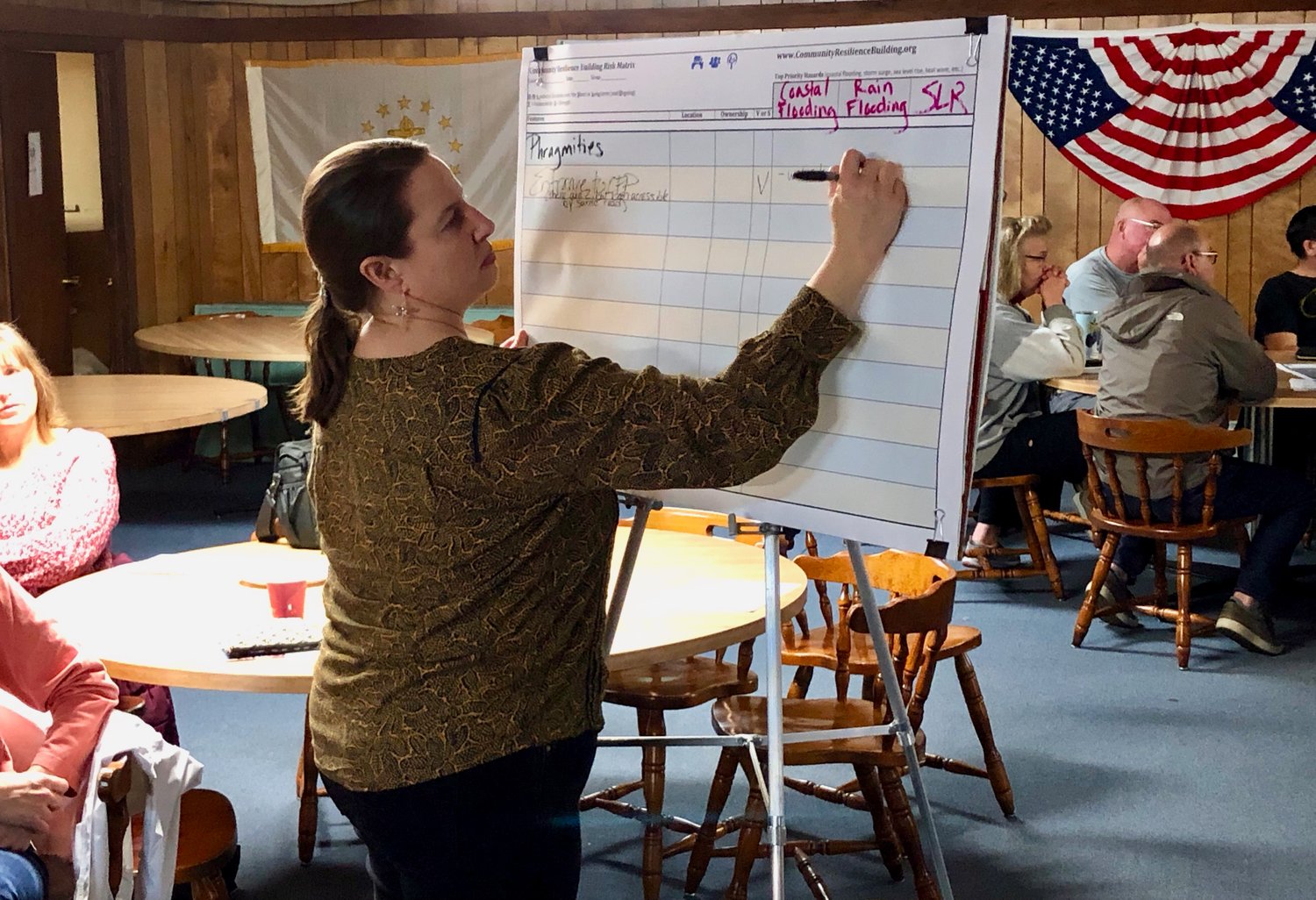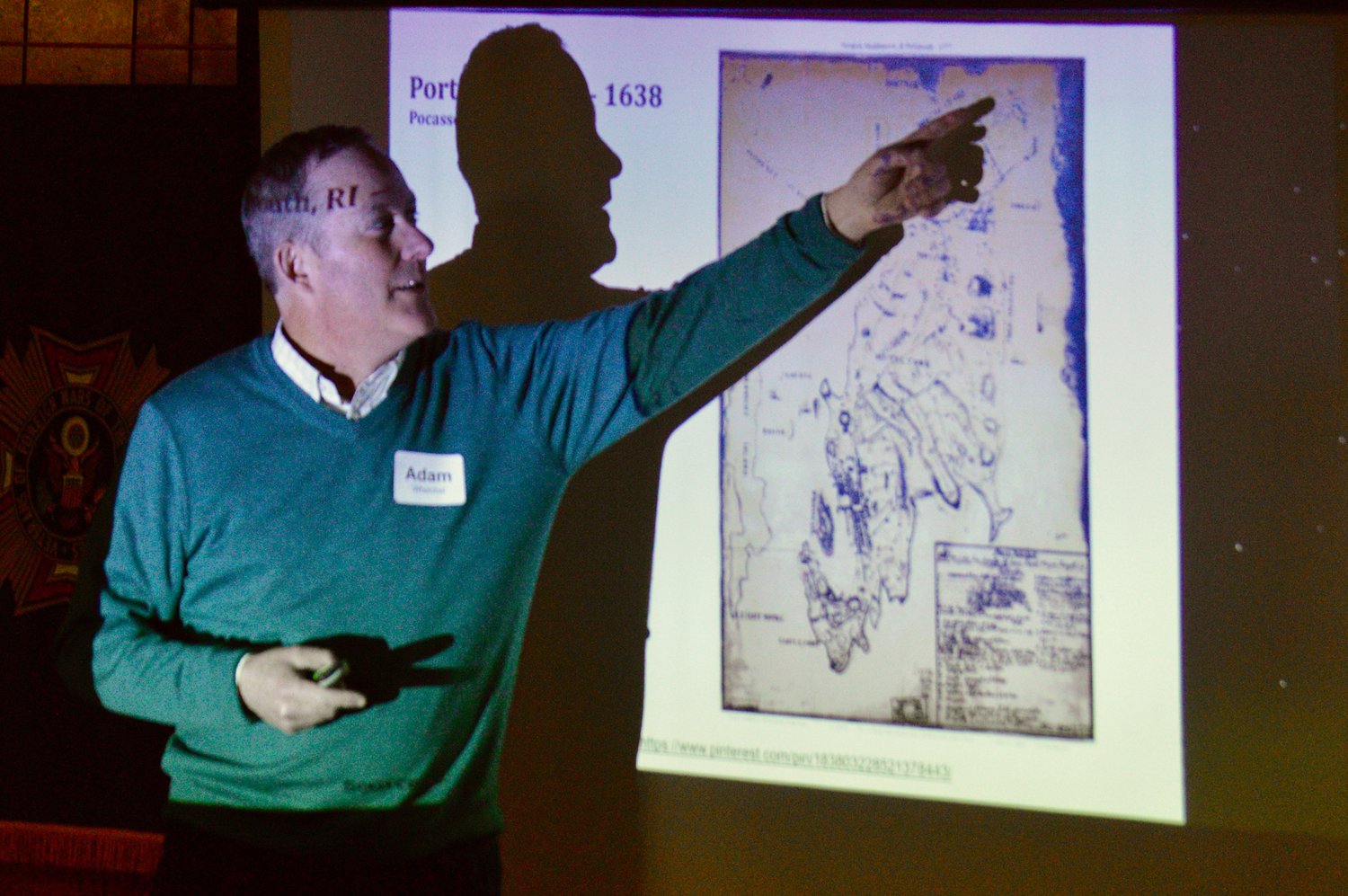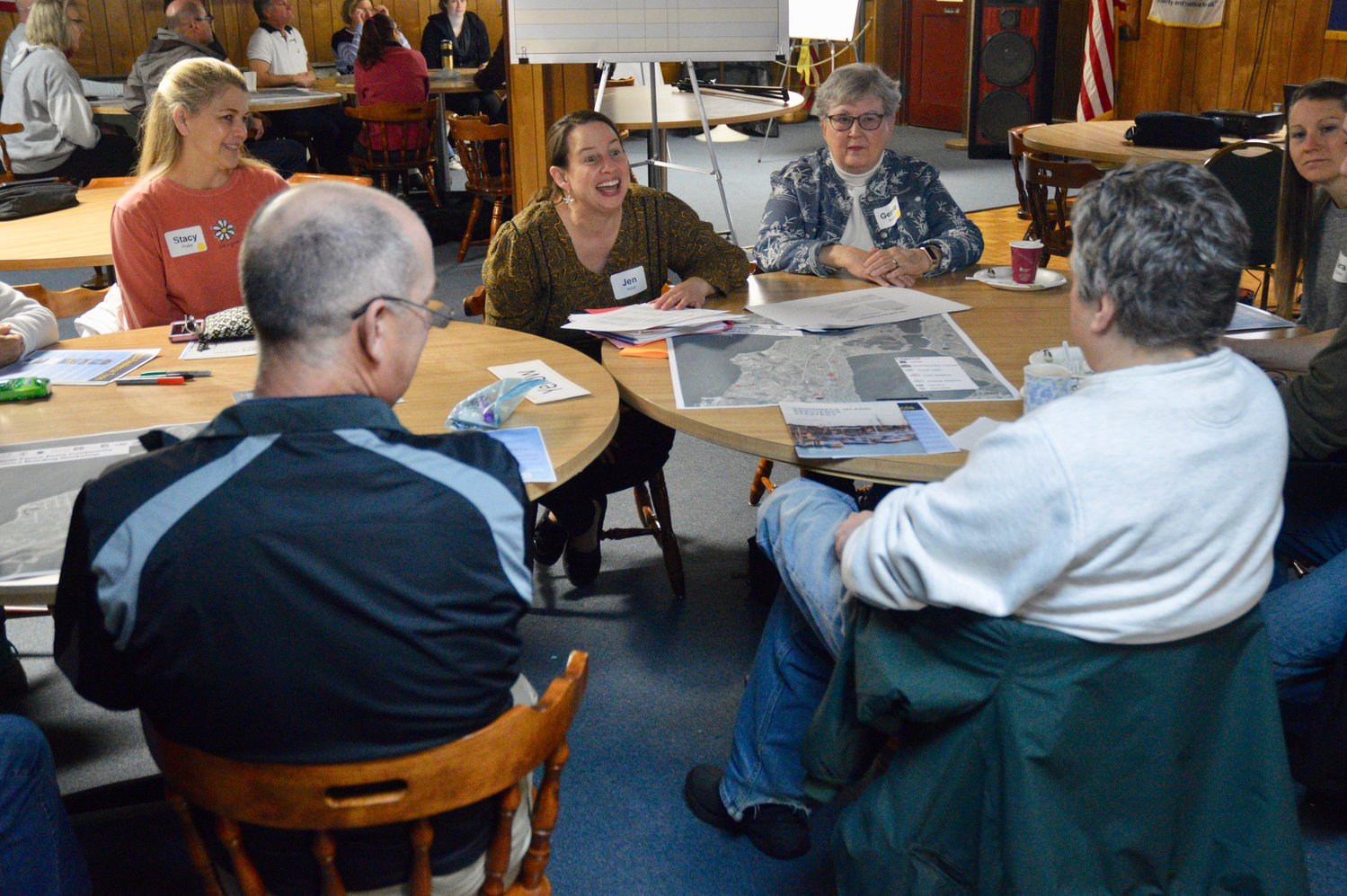- FRIDAY, APRIL 19, 2024
Building a more resilient community in Portsmouth
Portsmouth is first in state to hold coastal resiliency workshops

Portsmouth got a big boost this week in its ongoing efforts to protect its assets and infrastructure from the threats of climate change.
The Rhode Island Infrastructure Bank announced the town was one of five communities chosen to participate in the first round of the Municipal Resilience Program (MRP). The bank is committing $2 million in funding to implement climate resilience projects based on specific needs identified through the program.
The other communities selected were Barrington and Warren — those two towns will partner in creating shared priority resilience projects — and South Kingstown and Westerly.
The program is an outcome of the state’s Climate Resilience Action Strategy, Resilient Rhody and aims to deepen municipalities’ understanding of climate risk and help them develop resilient solutions.
Municipalities will expand upon their local hazard mitigation planning by developing initial resilience plans and prioritize projects through Community Resilience Building (CRB) workshops. The CRB workshops will be developed and delivered in partnership with The Nature Conservancy. After successfully completing the MRP, municipalities will be eligible to apply for implementation funds.
“The Municipal Resilience Program will assist cities and towns by developing a pipeline of priority projects to protect their community’s assets and infrastructure from the threats of climate change,” said Shaun O’Rourke, the bank’s director of stormwater and resiliency. “Our partnership with The Nature Conservancy through the MRP program will help ensure that our communities are protected and can quickly begin their resiliency projects.”
Implementation funding will be available for projects prioritized through CRB workshops. Municipalities will be able to access funding from the Infrastructure Bank with a local match.
“Working collaboratively with municipalities is critical to building statewide climate resilience and our investment in this program will help accelerate projects” said Infrastructure Bank CEO and Executive Director Jeffrey Diehl.
“Rhode Island municipalities are dealing with more intense rain storms, more high heat days, flooding, and coastal erosion,” said Sheila Dormody of The Nature Conservancy. “These CRB workshops will drive concrete improvements that make our communities safer and more resilient to climate change.”
In an e-mail, Town Council Vice President Linda Ujifusa said she was “thrilled” that Portsmouth was selected for the program and is now eligible for funding. “This will help Portsmouth address the growing threats of sea level rise,” she said.
Ms. Ujifusa, who attended Saturday’s coastal resiliency program hosted for Common Fence Point residents, said that event showed that Portsmouth residents are committed to promoting climate change resiliency.
“Also, the workshops will likely be a model for future ones undertaken as part of the Municipal Resilience Program in our town and beyond,” she said.
— Jim McGaw
PORTSMOUTH — Everything from flooding to phragmites were identified as problems facing the Common Fence Point neighborhood during a two-part, pilot community coastal resiliency program that concluded Saturday at the VFW Post 5390 hall.
The workshops, hosted by The Nature Conservancy, Rhode Island Sea Grant at the University of Rhode Island, and the Narragansett Bay National Estuarine Research Reserve (NBNERR) on Prudence Island, were aimed at providing residents with an understanding of connections between natural hazards and local planning efforts. Neighbors banded together in three breakout groups to identify both vulnerabilities and strengths of the neighborhood before coming up with strategies to either fix those problems or protect the area’s existing assets.
“You guys are the first in the state to do this,” Jen West of NBNERR told about three dozen residents who attended the second workshop Saturday morning, which following an initial session on April 6. “You’re the poster child for coastal resiliency.”
Portsmouth was recently selected (see related story) by the Rhode Island Infrastructure Bank as one of five communities in the state to participate in the first round of the Municipal Resilience Program (MRP). The bank is committing $2 million in funding to implement climate resilience projects based on specific needs identified.
While the two workshops in Common Fence weren’t officially connected to the MRP — only municipalities, not neighborhoods, are allowed to apply for the later program — they followed the same process of community resilience-building the MRP communities will go through, according to Ms. West. She said the town probably wouldn’t have applied for the MRP without the engagement at the neighborhood level.
In any event, the lead facilitator of the local workshops, Adam Whelchel, director of science at the Nature Conservancy in Connecticut, said the information compiled from Common Fence residents will be put together in a document that could be used for writing future grants for coastal resiliency projects.
More importantly, he said, the exercise started a conversation between neighbors and helped them connect with the wider community, including town leaders. Linda Ujifusa and J. Mark Ryan from the Town Council, along with Ray Perry, director of the Portsmouth Emergency Management Agency, all participated in Saturday’s workshop.
Vulnerabilities and strengths
“You know your community best and we want to capture that here today,” Mr. Whelchel said during the first workshop.
Added Pam Rubinoff of Rhode Island Sea Grant, “The town has already developed a big plan looking at floods and storms and heat. The effort here is really to get down to the neighborhood — what has all of you concerned?”
Residents were then broken out into three groups — spouses were separated — to identify the biggest issues facing their neighborhood.
Although the three groups differed a bit on how they prioritized a few issues, they were all unanimous on Common Fence Point’s No. 1 vulnerability: its main entrance/exit. Residents said it’s too narrow and often floods, making it nearly impassable at times. (A second entrance/exit is located further west on Anthony Road, but it’s designed for larger vehicles such as school buses and rescue vehicles.)
An impassible entrance/exit makes Common Fence Point residents particularly vulnerable in the event of a hurricane, when residents are urged to evacuate, said Gerrie Beebe of the “Yellow” subgroup.
She also recalled the time about 30 years ago, when a propane truck got stuck under the railroad tracks above the entrance. “Nobody could get out of Common Fence Point. This is a really important in the event of an emergency,” she said.
The section of the railroad track above the entrance is currently gone, but is expected to return once it is repaired, residents said. Jim Fogerty, another member of the Yellow group who moved into the neighborhood six months ago, said the involved entities — Old Colony Railroad, the Newport Dinner Train and Rail Explorers — should reevaluate whether to return that piece of track. He argued the railroad track doesn’t go much further east anyway. “Why would they rebuild it?” he asked.
Members of the Yellow group agreed that all stakeholders in the railroad track, including state and federal officials, should get together to discuss improvements to the entrance, including drainage upgrades and widening the area for vehicles.
Residents also said flooding and erosion was a problem on individual streets, in particular Common Fence Boulevard and Foxboro Avenue. “The way it’s being drained really needs to be addressed because it’s a real hazard, especially in the winter,” said Mr. Fogerty.
Other issues
The Common Fence Point Improvement Association’s (CFPIA) community hall — currently undergoing a major renovation — was cited as one of the neighborhood’s biggest strengths that should be protected.
“There are so many activities there now. Four years ago, there was almost nothing going on,” said Maddie Blais, who credited CFPIA President Conley Zani and others on the board for the dramatic improvements to the building and for breathing new life into its programs.
“So the action item is to never let Conley move?” asked Ms. West as others laughed.
All kidding aside, members of the Yellow team suggested that more neighbors be trained in grant-writing so they can assist CFPIA in bringing more needed funds to the hall. Currently only two people write grants, with Ms. Zani being one of them.
Residents also agreed to identify the more vulnerable members of the community — mainly the elderly and shut-ins — and keep an updated phone and e-mail list so neighbors can periodically check in on them.
Bob Blais, who reported out for one of the other breakout groups, also suggested keeping a directory of all neighbors along with their occupation or field of expertise, which would come in handy when trying to solve some of the community’s problems. “How many engineers does the neighborhood have, for example?” he asked.
Commonalities found
After the groups reported their findings, Mr. Whelchel went around the room to ask participants what they got out of the workshop. Several of them said they were impressed by how so many people showed solidarity on common issues.
Mr. Blais said something else struck him as well.
“It was very clear to me that we want to become an inclusive community, not an exclusive community,” he said.
Keywords
Common Fence Point, The Nature Conservancy, Rhode Island Sea Grant, Narragansett Bay National Estuarine Research ReserveOther items that may interest you













